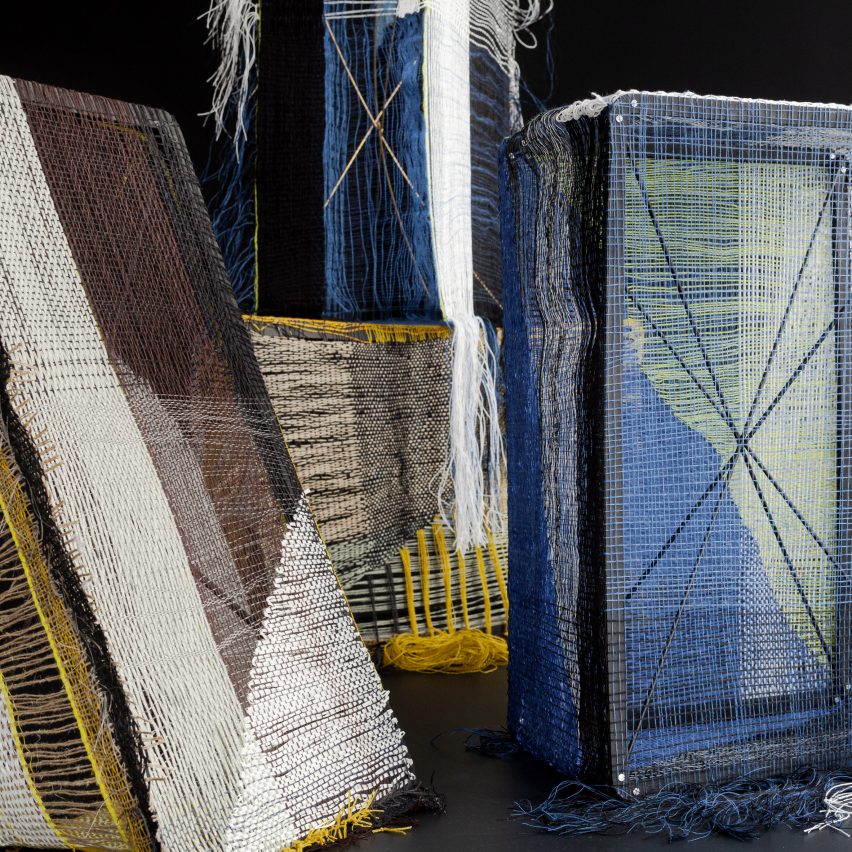3D textiles could "replace concrete and cement" in construction says Hella Jongerius

New three-dimensional weaving technologies could revolutionise architecture and lead to lighter, more flexible buildings according to Dutch designer Hella Jongerius.
Computerised looms that can produce 3D fabrics could lead to a new type of "pliable architecture", the designer said.
"Textile is the lightest and strongest construct that you can have," she said. "So with this, we could replace concrete and cement in the building industry."
Jongerius has previously created a series of 3D-woven bricks
3D weaving is in its infancy but it has already been used to create medical implants from polyester and to form aircraft bodies from carbon fibres.
But the technology could be scaled up to create buildings, the designer argued. Jongerius made the comments during a live Dezeen talk to mark the opening of her Woven Cosmos exhibition at Berlin's Gropius Bau.
In the talk, broadcast live from the museum, the designer shared an early preview of the show and discussed how she has used high-tech weaving applications.
They were woven using a multiaxial loom
3D weaving in particular, she argued, could be used to interlace building materials with photovoltaic solar yarns and create architecture that responds to the weather.
The technology, also known as multiaxial weaving, relies on advanced looms that allow fabric to be woven along multiple different axes as well as creating 2D textiles that can then be unfolded into 3D objects.
"It's the future," sa...
| -------------------------------- |
| Hunter Office Architecture uses Hindu "science of architecture" to arrange British Columbia house |
|
|
Villa M by Pierattelli Architetture Modernizes 1950s Florence Estate
31-10-2024 07:22 - (
Architecture )
Kent Avenue Penthouse Merges Industrial and Minimalist Styles
31-10-2024 07:22 - (
Architecture )






